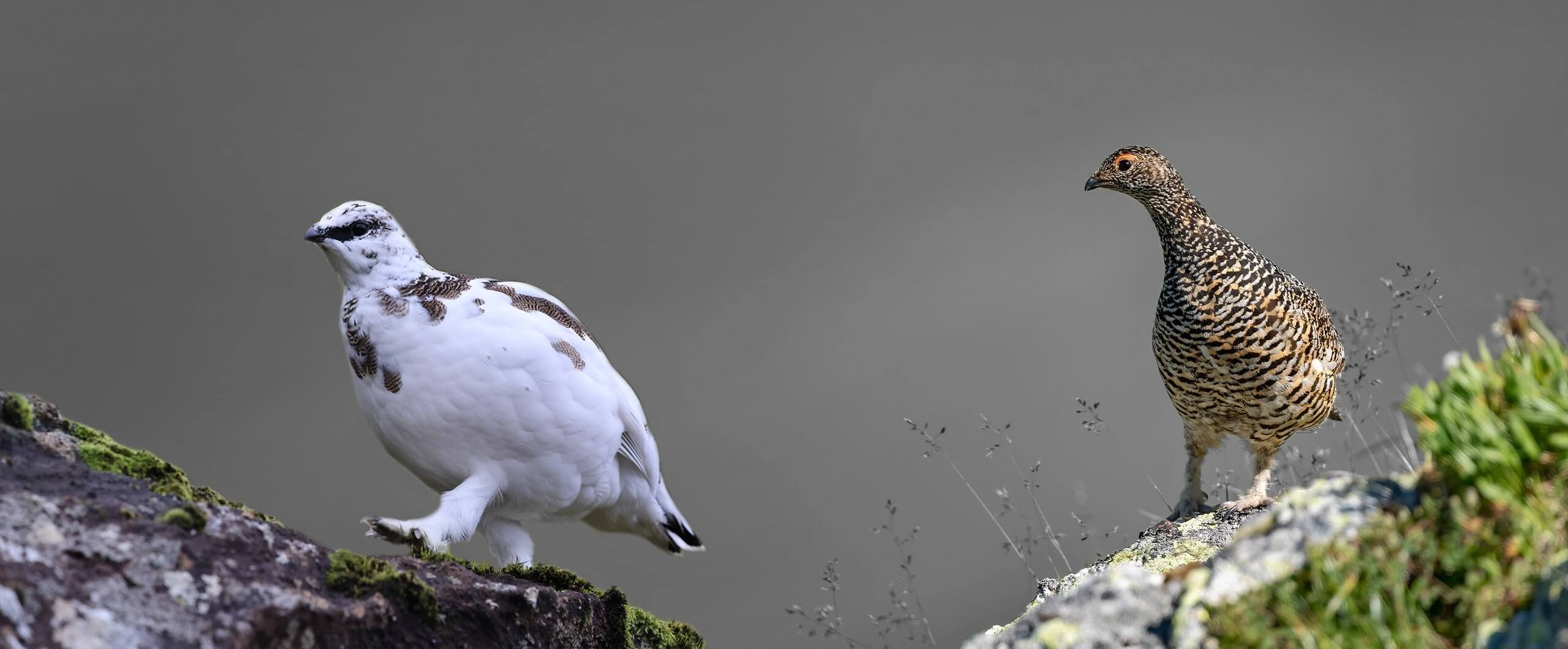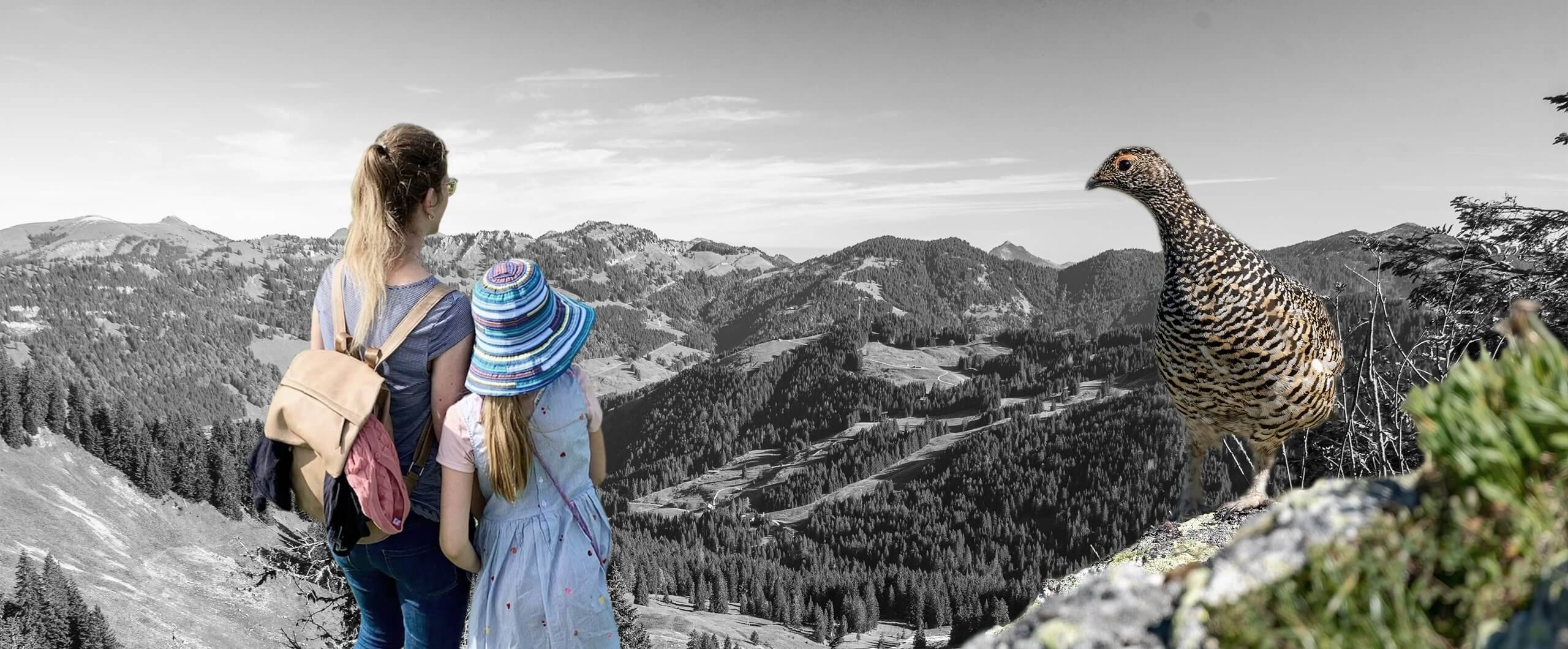
Rock Ptarmigan
(Lagopus mutus)
Profile
- Size: 35cm
- Weigth: 400-600g
- Family: Pheasant-like
- Courtship and breeding season: mid-April to early August.
- Population in Germany: approx. 300-600 (Bavaria)
Habitat
The predominantly used habitat of the Rock Ptarmigan extends in the Allgäu to the areas between 2000 and 2500m altitude. Structurally rich landscapes with an alternation of slopes, snow valleys, hilltops and ridges rich in food, cover and views are the ideal habitats of the Rock Ptarmigan. After the breeding season, the animals occasionally stay at altitudes of up to 3600m. The return to the breeding area then takes place with the snowfall.
Danger
The rock ptarmigan relies on its perfectly adapted camouflage and remains in the snow as long as possible when approached by humans. The animal's pulse drops sharply in the process. At the last moment it flees and experiences a high loss of energy due to the enormous increase in pulse. The increasing number of tourists in the Oberallgäu and the winter use of the habitat of the animals lead to an enormous impairment - for example, tourism in late winter (mating season of the rock ptarmigan) can have a negative impact on breeding success.
The Rock Ptarmigan prefers snow-free areas (e.g. wind-exposed ridges) for foraging. Snow caves are made in powdery snow, mostly in wind-protected northern locations..
Behavior
Rock Ptarmigan are crepuscular and diurnal and spend most of their time near the ground. They always move securely and crouched. In very cold temperatures and at night, they hide in snow caves they have dug themselves. During the winter time the ptarmigans live mostly alone or in smaller groups. In the mating season, the males delimit their territories and can be seen there during their courtship flights.
Feature: Appearance
Males and females differ in appearance depending on the season. In the summer months, males wear gray plumage and females wear tawny plumage - only the wings remain white. The dark plumage is replaced by white plumage in winter - only the tail remains black and male rock ptarmigan have a black stripe between and beak and eye and red eye bulges. The dense snow-white winter plumage has the advantage of hiding the Rock Ptarmigan from enemies and providing better protection from the cold. Feathered toes in the winter months lead to the fact that the ptarmigan sinks less in the snow.
